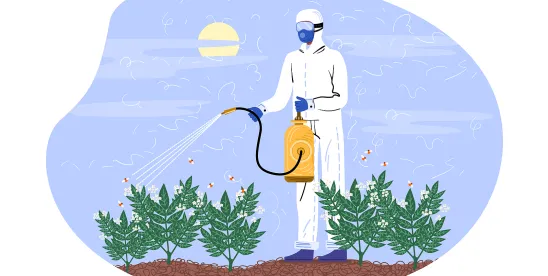On August 14, 2025, the U.S. Environmental Protection Agency (EPA) announced the availability of its Pesticide App for Label Mitigations (PALM), which is described as an “easy-to-use, mobile-friendly tool to serve as a one-stop shop that helps farmers and applicators use EPA’s mitigation menu to reduce pesticide exposure to nontarget species from agricultural crop uses.” According to EPA, this new tool will allow farmers to access quickly mitigation information from the final Insecticide Strategy, Herbicide Strategy, and other strategies while in the field.
EPA states that PALM will combine the functionality of the previously released spray drift and runoff calculators in a mobile-friendly format to assist farmers and applicators in determining what mitigation options are available to them. This application is purported to incorporate information from the Ecological Mitigation Support Document to Support Endangered Species Strategies Version 2.0 (published in April 2025), as well as the Insecticide Strategy and Herbicide Strategy. EPA states that PALM will also provide a useful summary to show how users can calculate their runoff and erosion mitigation points or ecological spray drift buffer reductions and what field characteristics or application parameters are applicable to their individual applications. EPA claims that PALM will help pesticide users understand available mitigation measures without the need for redundant data entry or any additional software or models.
EPA states that this is the initial version of PALM and is part of EPA’s larger information technology improvement goals. EPA intends to expand the functionality of the application and include access to additional information on labeling and bulletins and welcomes public feedback to improve both subsequent versions of PALM and other available tools that help communicate how to comply with the runoff and erosion point system and the ecological spray drift buffers as they begin to appear on pesticide labeling.
To assist the public on how to use the new mobile tool PALM and provide information on mitigation measures for pesticide users, EPA will be holding a public webinar on September 16, 2025. The webinar will include:
- An overview of the mitigation menu, including runoff/erosion and spray drift mitigation measures, and how pesticide users and growers can evaluate their fields for these mitigation measures;
- An explanation of how to navigate the mitigation menu web page and available resources, including the new PALM tool; and
- A demonstration of the available tools to calculate runoff/erosion mitigation points and spray drift buffers.
Information on how to register for the webinar is available here.
EPA states it encourages users to submit feedback on and suggest future enhancements to PALM. To submit feedback on PALM, please e-mail PALM@epa.gov.
Commentary
This is an important component of the Endangered Species Act (ESA) rollout of “outreach and education” about the ESA implementation plan for species protection. As EPA continues with the development of the “Bulletins Live!” electronic labels, pesticide users will have access to both the latest label restrictions and species protection requirements for a particular pesticide. The species protection component will be based on a number of “mitigation points” required, given the toxicity value of the pesticide and the kind of application method that could result in species exposure (example, aerial application may have a greater risk of drift and require more mitigation points compared to ground applications).
This PALM application is designed to be a portable and current guide to what mitigation points are available for different use conditions (e.g., wind buffers, contour plowing) to help a user determine options available to attain the required points.
Pesticide applications are site- and time-specific, and the PALM information about what mitigation options are available in a portable and real-time format should help a user know what is needed to comply with label requirements at that specific time and place. The user will also have to be aware of information about relevant species habitat in the intended application area or other factors, such as seasonal variation (example: nesting season of a protected species).
With access to electronic labels, training on how to learn about and implement mitigation options, development of refined maps of sensitive areas where species protections are needed, and the PALM pocket guide, EPA is attempting to facilitate the understanding and acceptance of its species protection program. Even as the program continues to develop, these efforts represent significant progress in integrating the requirements of the Federal Insecticide, Fungicide, and Rodenticide Act (FIFRA) and ESA.




 />i
/>i
